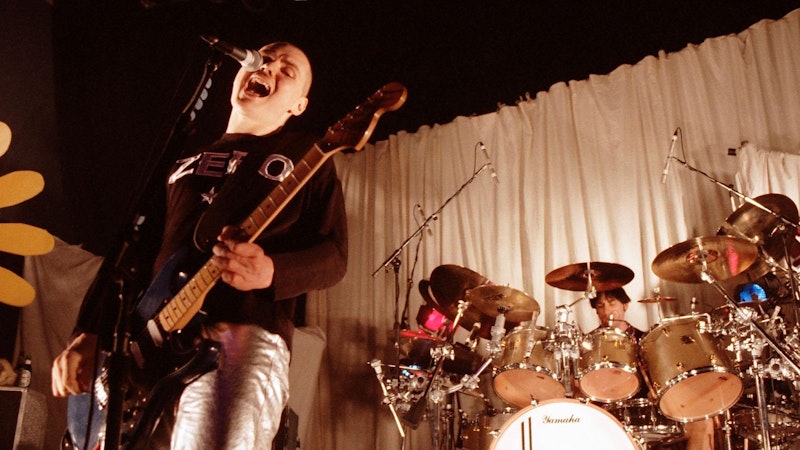It’s true. There once was a hard demarcation line between corporate rock and “alternative” or “indie rock.” Before the internet, before “poptimism,” before the eradication of subcultures, there were two different camps. On one side was Bon Jovi, Journey, Asia, Rod Stewart and other plastic, overproduced bands. On the other were the Replacements, Public Enemy, the Pixies, R.E.M., Siouxsie and the Banshees. It was us vs. them.
For fans of alternative music in the 1980s, a destination was the original 9:30 Club in Washington, D.C. The original club opened in 1980 and closed in 1996, and it was just announced that they’re building a replica of it. It’ll be called the Atlantis (the original was in the Atlantic building on F St.) and sit next to what 1980s holdovers like me still call “the new 9:30 Club” on V St. near Howard University. To inaugurate the new space there’s a long list of A-list stars coming to play: Billy Idol, Red Hot Chili Peppers, the Foo Fighters.
I’m ambivalent about the new 9:30. On the one hand, the original club in downtown Washington was everything people say about it. It was dingy, dark, smelled funny and created nights of magic where daring musical talent performed. On the other hand, the alternative music scene, particularly its punk rock wing, could be rigid in its political orthodoxy and limited in musical vision. There’s also the grace of, as an old clubbing friend of mine put it, “letting something like that have its time and then just letting it be.”
I worked in a record store while I was at Catholic University in Washington in the 1980s, and we’d always get free tickets to the club. I remember great shows I saw: That Petrol Emotion, Sam Phillips, Siouxsie, Screamin’ Jay Hawkins, Lush. (I got kicked out once.) The original 9:30 was in a location that hadn’t recovered from white flight and the destruction from the 1968 riots following the killing of Martin Luther King. I’ve heard people talk about liquor stores and strip joints and druggies on the street at the time, but I just remember it being desolate. I had to go there early once because I was writing about a band for my school newspaper (the band was Baltek, a kind of goth punk group) and remember walking down the middle of F St. in broad daylight. No one was around. You’d leave late after show and the eerie silence and gray color of the city was like being on the surface of the moon.
The legacy of creating inspiring rock ‘n’ roll in a hole in the wall just a few blocks from the White House deserves to be honored. Original 9:30 Club founders Dody DiSanto and Jon Bowers, and current owners Seth Hurwitz and Rich Heinecke belong in any D.C. Hall of Fame. While the radio played Pink Floyd and the Capital Centre featured REO Speedwagon and Warrant, the 9:30 brought R.E.M., Nirvana (who, in 1991, wrote their 14-song set list on a paper plate before the show), Red Hot Chili Peppers, Billy Bragg, Husker Du and Jane’s Addiction.
Yet there could also be an insular and stifling atmosphere around the alternative music scene. In his newly reissued book Like Punk Never Happened, journalist Dave Rimmer charts the 1980s path of Culture Club and other groups that resisted the angry and dour punk and alternative scenes for upbeat pop and blue-eyed soul. Working in a record store, my friends and I loved the edgy bands the played the 9:30 Club. Yet we also wanted Culture Club, Duran Duran, Bell Biv DeVoe and Michael Jackson. In his great history of pop music Major Labels, Kelefa Sanneh offers this: “The promise of punk was that it offered room for practically everything—in its broadest sense, loving punk meant being nonmainstream, a slippery and seductive identity that was often more appealing than the music itself.”
Sanneh also compares the dogmatism of punk to that of hard-core Christians. “Punk demanded total devotion, to be expressed as total rejection of the mainstream. This was a quasi-religious doctrine, turning aesthetic differences into matters of grave moral significance.” While rock ‘n’ roll was more of an inclusive “eternal spirit,” argues Sanneh, punk was like Jesus in the gospel of Luke: "If anyone comes to me and does not hate his father and mother, his wife and children, his brothers and sisters—yes, even his own life—he cannot be my disciple. And anyone who does not carry his cross and follow me cannot be my disciple.”
This is as good a description of the super-serious (and sonically conservative) D.C. punk gods Fugazi as any. One of the last shows I saw at the 9:30 was Lush, on December 1, 1990. The band was great but there a heavy cloud of hipster solemnity in the place, like a rock ‘n’ roll vespers.
In this sense the 9:30 replica is like a new model of the birthplace of Jesus. There’s an is-this-necessary feel to it. A couple of weeks ago I saw a dazzling jazz band, the SF Jazz Collective, at a great new space in Maryland called the AMP. One of the band members is saxophonist Christ Potter, whose album Imaginary Cities is a masterpiece—at once beautiful, challenging, risk-taking and godly. I left feeling thrilled, like the kid I used to be walking out of the 9:30 on some nights. I felt my spirit had experienced something fresh. An “alternative” like the Foo Fighters just sounded played out.

